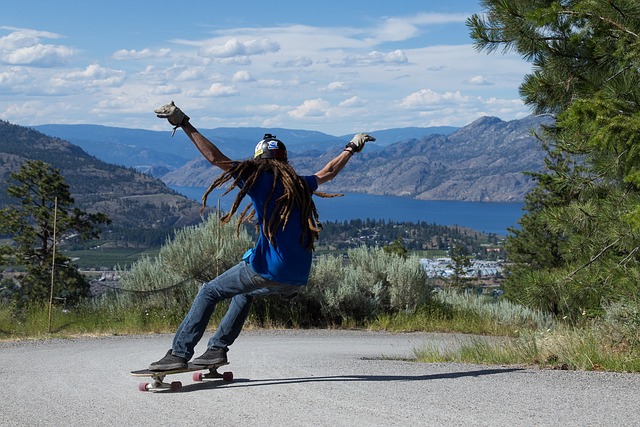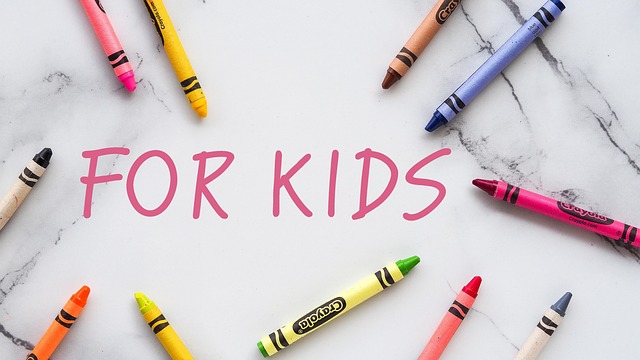Selecting the right longboard for beginners prioritizes stability, ease of use, and personalized features like wheel size, deck shape, and flex. Mastering basic balancing techniques, smooth turning, and carving enhances control and confidence. Choosing safe riding environments, wearing reflective gear, and practicing during low-traffic times ensures a enjoyable experience. Continuous learning through advanced techniques and exploring diverse spots enriches the longboarding journey. Regular cleaning, conditioning, and maintenance prolongs board lifespan and performance for new riders.
“Get ready to embark on an exhilarating journey with our ultimate guide to smooth cruising on a longboard, tailored for first-time riders. We’ll navigate you through every step, from selecting your perfect longboard match to mastering the art of balancing and carving like a pro. Learn about ideal environments for safe cruising and advanced techniques to elevate your experience.
By following these tips and ensuring proper maintenance, beginners can enjoy a seamless, lasting cruise, transforming your first ride into an unforgettable adventure.”
Choosing the Right Longboard for Your First Ride

When embarking on your first longboard ride, selecting the perfect board is key to a smooth and enjoyable experience. For beginners, it’s best to opt for a longboard designed specifically for ease of use and stability. Look for boards with larger wheels, as they provide better cushioning against rough surfaces and make turning easier. A drop-down deck, which lowers the rider’s center of gravity, can significantly enhance balance and control.
Consider the shape and flex of the board as well. Some longboards are designed to be stiffer for better speed retention, while others have a more flexible construction that offers a softer ride and improved shock absorption. For a beginner, a slightly flexible board is often recommended, as it can make learning tricks and maneuvers less daunting. Always ensure the board’s dimensions suit your height for optimal control and comfort during your first few cruises.
Mastering the Basics: Standing and Balancing

Mastering the fundamentals of standing and balancing is a crucial step in your journey with a longboard for beginners. It’s all about finding your center of gravity and distributing your weight evenly. Start by positioning yourself at the middle of the board, keeping your feet hip-width apart for stability. Focus on maintaining an upright posture, keeping your back straight and shoulders relaxed.
Practice lifting your front foot slightly while extending your back leg, helping you to shift your balance forward. This basic stance will allow you to control your speed and make smooth turns. Remember, balance is key, and with consistent practice, you’ll soon develop the confidence to glide effortlessly on your longboard for beginners.
Techniques for Turning and Carving Smoothly

When learning to cruise on a longboard for beginners, mastering smooth turning and carving is key to an enjoyable experience. Start by positioning your feet comfortably, with one slightly ahead of the other, allowing for better balance. Bend your knees slightly and maintain this bent-knee stance as you glide, which provides stability and makes turns easier.
To turn smoothly, shift your weight onto the inside foot as you lean into the corner. This action carves a graceful arc, enabling you to navigate curves with ease. Practice carving in both directions to develop consistency. Remember, smooth turning is about control and balance, so take your time, focus on your stance, and feel the board respond to your movements.
Understanding Your Surroundings: Safe Cruising Environments

Understanding your surroundings is key to a smooth cruising experience, especially when using a longboard for beginners. Safe cruising environments offer a comfortable and controlled setting where new riders can learn and improve their skills without worrying about traffic or unfamiliar terrain. Look for open spaces like empty parking lots or quiet residential streets with smooth surfaces, free from obstacles. These areas allow for easy practice of basic turns, carving, and speed control, helping beginners build confidence.
Moreover, considering the time of day can significantly enhance safety. Early mornings or late evenings often have less traffic, making it safer to cruise. Remember to always wear reflective gear and ensure your longboard is equipped with bright lights if you plan to ride in low-light conditions. By choosing the right environment and being mindful of safety precautions, beginners can enjoy a seamless transition into the world of cruising on their longboards.
Advanced Tips: Enhancing Your Cruising Experience

Whether you’re a seasoned cruiser or just starting out, there are always ways to enhance your experience on two wheels. For beginners, picking up a longboard for cruising is an excellent way to ease into the world of boarding. It offers a more relaxed and stable ride compared to shorter boards, making it perfect for leisurely strolls along the waterfront or exploring new neighborhoods. Take time to learn basic techniques like carving and turning smoothly, which not only make your rides more enjoyable but also safer.
To elevate your cruising experience further, consider incorporating some advanced tips into your routine. Experiment with different riding styles, such as pumping (using momentum to gain speed) and flowing (letting the board take you with smooth, continuous turns). Invest in high-quality wheels and bearings for smoother rolls and better control. And don’t forget to explore various cruising spots – from scenic coastal paths to urban streetscapes – to discover new landscapes and communities of fellow cruisers.
Maintenance and Care for a Long-Lasting Smooth Cruise

Maintaining a longboard is essential for ensuring a smooth cruising experience, especially for beginners looking to enjoy this activity for years to come. Regular cleaning and conditioning of the board’s surface are crucial to prevent damage from dirt, salt water, or other elements. Using a mild soap and warm water, gently wash the board to remove any grime or debris. After drying it thoroughly, apply a protective wax or coating designed for longboards to safeguard against moisture absorption and maintain its glide.
Additionally, keeping the wheels and bearings in good condition is vital. Regularly lubricate the axles and bearings with a lightweight, water-based lubricant to ensure smooth rotation. Rotate your board regularly to distribute wear evenly on all four wheels, which can extend their lifespan significantly. For beginners, proper care of their longboard for cruising not only enhances performance but also contributes to a more enjoyable and lasting experience.
